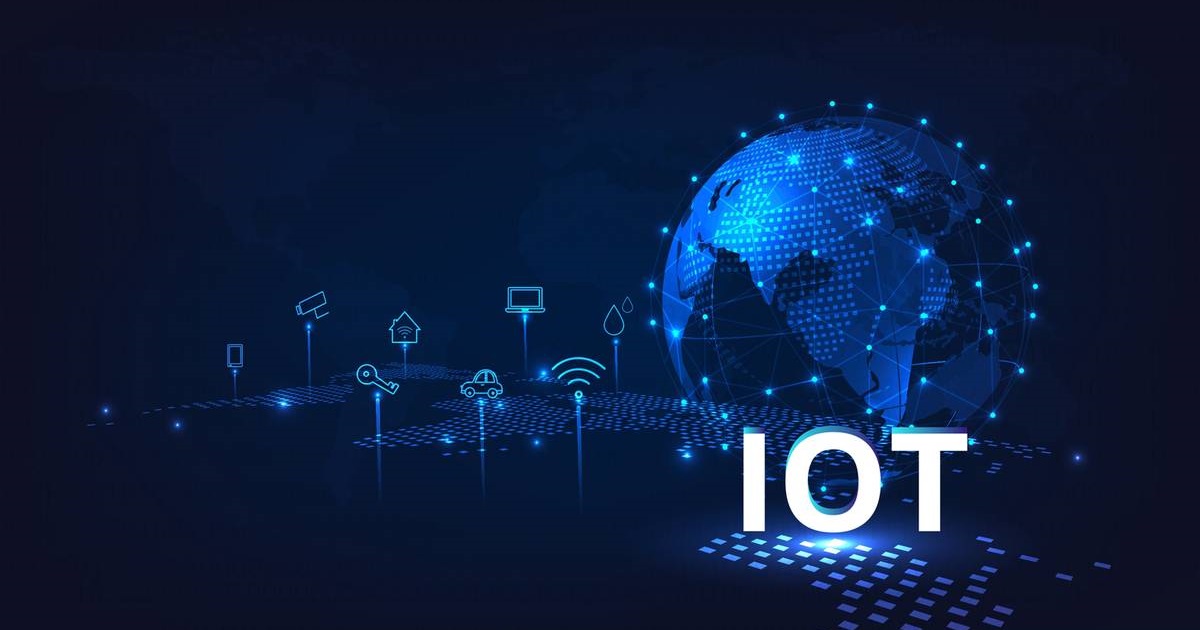
Industrial IoT
Tuya Smart | January 24, 2024
Tuya Smart, the global IoT developer service provider, has delivered its Best Practices in using Amazon Aurora at IoT industry. Amazon Aurora is a relational database management system (RDBMS) built for the cloud with full MySQL and PostgreSQL compatibility. Tuya and Amazon Web Services (AWS) built a solid basis of collaboration in database use cases exploration while also delivering smooth operation of billions of devices requiring high concurrency and low latency.
Tuya and AWS: Building a benchmark for database implementation practice
Tuya is a leading technology company focused on making our lives smarter. Tuya does this by offering a cloud platform that connects a range of devices via the IoT. By building interconnectivity standards, Tuya bridges the intelligent needs of brands, OEMs, developers, and retail chains across a broad range of smart devices and industries. Tuya's solutions enable partners and customers by improving the value of their products while making consumers' lives more convenient through the application of technology.
As of September 30, 2023, the Tuya IoT Developer Platform has accumulated over 909,000 registered developers from over 200 countries and regions, covering industries including real estate, hospitality, residential, industry, agriculture, etc. The greater the breadth of business coverage, the more advanced technological support required. Tuya faces high-frequency reads and writes as well as enormous data storage challenges from billion-level online devices. Meanwhile, due to the commercial scenarios involving smart homes and smart industries, Tuya's operating response demands low latency in order to deliver a smoother user experience. Furthermore, Tuya's quick expansion and regular business changes have posed significant challenges to its operation and maintenance management.
Tuya selected Amazon Aurora as core database engine for its unparalleled performance and availability at global scale. How does Tuya specifically leverage the Amazon Aurora database?
Tuya currently manages billions of real-time online devices and can keep cloud message processing response times under 10 milliseconds. However, billions online devices provide a challenge. During holidays, there will be peak traffic volume, with tens of millions of devices going online and offline virtually simultaneously. Tuya used Amazon Aurora to construct a data storage solution to solve the main problem of rapid increase in short-term traffic, and to fully utilize resources. Aurora's design, which separates compute and storage and low-latency replication functionality, improves system throughput by enhancing the effect of read-write separation. Aurora provides up to 15 read replicas, setting the groundwork for Tuya's read flexibility development. At the same time, Tuya has integrated Aurora Serverless, which includes seconds-level elastic expansion and contraction, allowing Tuya to handle extremely heavy business traffic smoothly.
Tuya's customers are located throughout more than 200 nations and regions, and they deal with widespread access to IoT data. Different countries and regions have different regulations on data compliance, such as GDPR and local PII. Tuya needs to adhere to each region's data security compliance regulations. As Tuya's primary business data storage provider, Amazon Aurora was among the first in the public cloud sector to enable physical encryption for database products, which significantly decreased the cost of Tuya's security compliance transformation and gave Tuya excellent basic security guarantees.
In addition, Tuya is continuously testing out additional new innovation unique to Aurora, such as Enhanced Binlog, zero-ETL, and Limitless Database. Aurora's ongoing investment in innovative technologies provides more opportunities for Tuya to expand its business.
Additionally, based on Tuya's comprehensive IoT developer platform architecture, both parties have collaborated to enhance Tuya IoT applications performance indicators like stability, low latency, scalability, and security in the real-world application of databases, revealing more potential and possibilities and enabling the IoT.
Tuya and AWS: Continuously promoting the evolution of cloud experience
Data-driven approaches will usher in a new era of innovation in tandem with the swift advancement of data applications.
At this year's re:Invent conference, Peter DeSantis, Senior Vice President of AWS, reviewed the relational database's development history in great detail. In 2014, AWS created Aurora based on log architecture. In 2018, the release of Aurora Serverless allowed for seamless scaling of database resources through virtualization technology. This year, AWS announced the launch of the Amazon Aurora Limitless Database, which automatically scales to millions of write transactions per second well beyond current limits of a single PostgreSQL instance.
It is apparent from Amazon Aurora's development history that AWS has always been dedicated to innovation. Customers and partners from a range of industries actively utilizes AWS to enable rapid innovation in a variety of ways, while also working together to enhance the cloud experience. Similar to how Tuya and AWS work together, Tuya's effective and user-friendly IoT developer platform and rich and varied IoT solutions have built a significant lighthouse, embracing the Amazon Aurora's innovation and accelerated the process of building a more secure and reliable IoT database use case.
Amazon Aurora VP Yan Leshinsky said, "Amazon Aurora is the fastest growing service in the history of AWS and is trusted by hundreds of thousands of customers. We innovate by working backwards from customers' needs, and we appreciate the feedback that Tuya has shared. We remain committed in developing new Aurora features and capabilities so all customers can accelerate their applications' capabilities and business growth by using Aurora."
"Tuya has always committed to strengthening advanced and valuable innovations, while offering open and neutral ecosystem assistance for global partners. We provide our developers with enhanced operational and maintenance control, adaptable data storage options, superior product experience, and a global business layout by utilizing the Amazon Aurora database. We will continue to work with AWS to benefit the world in the future in areas including technology, ecosystems, and cloud computing, helping customers achieve commercial success." said Eva Na, Vice President of Marketing and Strategic Cooperation, and CMO of Tuya Smart.
Enhancing the partnership with AWS, Tuya delivered IoT best practice using Amazon Aurora database, giving the industry's growth additional impetus. Tuya will maintain its open and neutral stance going forward, collaborating with cloud service providers like AWS to offer global developers a more secure, reliable, and productive cloud environment, thereby advancing the innovation and development of the entire industry.
Read More

Enterprise Iot
Nozomi Networks | January 25, 2024
Nozomi Networks Inc., the leader in OT and IoT security, today introduced Guardian Air™, the industry's only wireless spectrum sensor purpose-built for OT and IoT environments worldwide. With 80 percent of new IoT deployments wirelessly connected, wireless is quickly becoming a preferred network. The explosion of wirelessly connected devices increases potential access points and exploitation of networks. This puts critical infrastructure at risk of cyberattacks and disruptions to operations.
Guardian Air provides much-needed visibility into wirelessly enabled devices which until now were only detected once connected to the wired network. Guardian Air monitors several prominent wireless frequencies, not just Bluetooth and Wi-Fi, to provide security teams with immediate visibility of connected sensors, devices, laptops and cell phones. With the addition of Guardian Air, customers have a comprehensive network solution all in one integrated platform.
"Nozomi Networks has once again innovated to address an unmet need for wireless-level monitoring in OT and IoT environments," said Danielle VanZandt, an industry manager for commercial and public security research at Frost & Sullivan. "From smart manufacturing to digital medicine, to building automation, to modern oil field production and more, today industrial organizations are relying on billions of wireless devices to speed production and time to market. Guardian Air gives IT security professionals and OT operators the visibility they need to get a firm handle on wireless risk management and response."
With Guardian Air, IT security professionals and OT operators can:
Continuously monitor prominent wireless frequency technologies used in OT and IoT environments including Bluetooth, Wi-Fi, cellular, LoRaWAN, Zigbee, GPS, drone RF protocols, WirelessHART and more,
Immediately detect wirelessly connected assets and gain asset information to quickly address unauthorized installations,
Detect wireless-specific threats, including brute force attacks, spoofing, and bluejacking – with the added ability to determine the location of the devices performing the attacks,
Seamlessly integrate wireless data into a single OT & IoT security platform that unifies asset visibility from the endpoint and across wired and wireless networks.
"Wireless is fundamentally changing the way industrial organizations operate. Unfortunately, it also massively expands the potential attack surface," said Nozomi Networks Co-founder and Chief Product Officer Andrea Carcano. "Guardian Air solves this problem by giving customers the accurate visibility they need at the wireless level to minimize risk while maximizing resiliency. Because Guardian Air integrates easily into the Nozomi Networks Vantage platform, customers can combine network, endpoint and wireless for the greatest visibility, threat detection and AI-powered analysis for real-time security management and remediation across the entire attack surface."
The Nozomi Guardian Air wireless sensor will be available this spring from Nozomi Networks and its extensive global network of channel partners.
About Nozomi Networks
Nozomi Networks accelerates digital transformation by protecting the world's critical infrastructure, industrial and government organizations from cyber threats. Our solution delivers exceptional network and asset visibility, threat detection, and insights for OT and IoT environments. Customers rely on us to minimize risk and complexity while maximizing operational resilience. www.nozominetworks.com
Read More

IoT Security
AppViewX | January 12, 2024
AppViewX, the leader in automated machine identity management (MIM) and application infrastructure security, today announced the AppViewX Digital Trust Platform has been named IoT Security Product of the Year in the 8th annual IoT Breakthrough awards program, which showcases technologies and companies that drive innovation and exemplify the best in IoT technology solutions across the globe.
IoT Breakthrough is a leading market intelligence organization that recognizes the top companies, technologies and products in the global IoT market. The mission of the IoT Breakthrough Awards program is to recognize the innovators, leaders and visionaries from around the globe in a range of IoT categories, including Industrial and Enterprise IoT, Smart City technology, Connected Home and Home Automation, Connected Car, and many more. This year's program attracted nominations from companies all over the world.
“Unmanaged machine identities for IoT devices can create critical security vulnerabilities, but for most organizations discovering, maintaining visibility into and controlling them has become manually unfeasible,” said Gregory Webb, CEO of AppViewX. “The AppViewX Digital Trust Platform automates IoT identity management at scale across the largest, most complex and distributed customer environments, allowing customers to achieve significantly stronger security posture and meet compliance requirements.”
All IoT Breakthrough Award nominations were evaluated by an independent panel of experts within the IoT industry, with the winning products and companies selected based on a variety of criteria, including most innovative and technologically advanced products and services.
About AppViewX Digital Trust Platform
Out of the box, AppViewX provides instant value to customers by discovering all certificates across complex enterprise environments, building and maintaining inventories, provisioning both private and public trust certificates from any CA, alerting to expiring certificates and fully automating renewals and revocation to eliminate outages and security weaknesses across machines, applications, services, and security infrastructure.
About AppViewX
AppViewX is trusted by the world’s leading organizations to reduce risk, ensure compliance, and increase visibility through automated machine identity management and application infrastructure security and orchestration. The AppViewX platform provides complete certificate lifecycle management and PKI-as-a-Service using streamlined workflows to prevent outages, reduce security incidents and enable crypto-agility.
Fortune 1000 companies, including six of the top ten global commercial banks, five of the top ten global media companies, and five of the top ten managed healthcare providers rely on AppViewX to automate NetOps, SecOps, and DevOps. AppViewX is headquartered in New York with offices in the U.K., Australia and three development centers of excellence in India. For more information, visit https://www.appviewx.com and follow us on LinkedIn and Twitter.
Read More